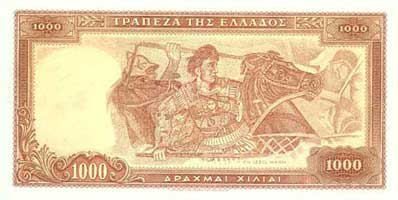|
|
More Information and details of the Mosaic
In the Battle of Issus in 333 BC Alexander the Great of Macedonia defeated Darius III of Persia. Combatants Macedonians and their Greek Allies, led by Alexander. With about 5,000 cavalry, 26,000 infantry. Location The battle took place south of the ancient town Issus, which is close to present-day Iskenderum, Turkey, on both sides of a small river called Pinarus. At that location the distance from the gulf of Issus to the surrounding mountains is only 2.6 km, a place where Darius could not take advantage of his superiority in numbers. Prelude Alexander set out into Asia in 334 BC and defeated the local Persian satraps at the Battle of the Granicus. He then proceeded to occupy all of Asia Minor.
While Alexander was in Tarsus he heard of Darius massing a great army in Babylon. If Darius would reach the Gulf of Issus he could use the support from the Persian fleet under Pharnabazus still operating in the Mediterranean Sea, thus easing his supply and possibly landing troops behind the enemy. Alexander kept his main army at Tarsus but sent Parmenio ahead to occupy the coast around Issus. In November, Alexander got reports that the great Persian army had advanced into Syria. Alexander decided to mass his scattered army and advance south from Issus through the Pass of Jonah. Darius knew that Parmenio held the Pass of Jonah and thus chose a northern route of advance. The Persians captured Issus without opposition and killed all the sick and wounded that Alexander had left behind. Now Darius found out that he had placed his army behind the Macedonians and had cut their supply lines. He then advanced to a good defensive position along the river Pinarus and waited for Alexander to come to him.
Issus Battlefield The battle
Movements to the Battlefield
Decisive Movement
The Macedonians advanced though the Pass of Jonah. Alexander led his Companion cavalry on the right flank and he set his Greek allied cavalry on the left of the Macedonian phalanx with Parmenio in command. Darius had placed some 20,000 of his troops on the mountain slopes and he positioned himself behind in the centre with his best infantry, the Greek mercenaries, and his royal cavalry guard. He placed most of his cavalry close to the coast. The Hypaspists led by Alexander, on foot, delivered an assault on the Persian infantry and managed to punch a hole through the Persian line. At the same time the Persian cavalry clashed with Parmenio's forces on the left. Alexander with his companion cavalry then lead a direct assault against Darius who fled from the battlefield. This caused the Persians to abandon their positions. The Macedonian cavalry pursued the fleeing Persians for as long as there was light. Aftermath The battle of Issus was a decisive Macedonian victory and it marked the beginning of the end of Persian power. Darius fled over the Euphrates to safety, leaving his mother, wife and children to be captured. Alexander would defeat Darius again at the Battle of Gaugamela in 331 BC. Of note The battle of Issus was illustrated (according to the Roman writer Pliny) by a Greek painter, Philoxenus of Eretria, in the late fourth century BC. This painting does not survive, but a mosaic representing the battle, perhaps after this earlier Greek painting, was found in Pompeii in the House of the Faun. The mosaic is now in the National Museum of Naples and is dated first century BC.
1000 Greek Drachmae with the Issus Battle Mosaic
Alexander addresses his officers before the battle of Issus by Andre Castaigne (1898/99).
Battle of Issus (333 BC) Alexander the Great (1956 film) Battle Maps: http://www.dean.usma.edu Alexandretta, city founded near the site of the Issus Battle Retrieved from "http://en.wikipedia.org " Plutarch. Life of Alexander
 |
||||||||||||||||||||||||||||||||||||||||||||||||||||||||









